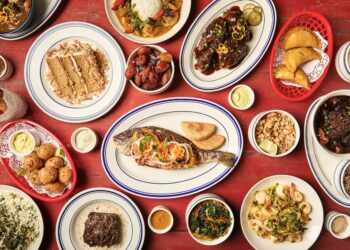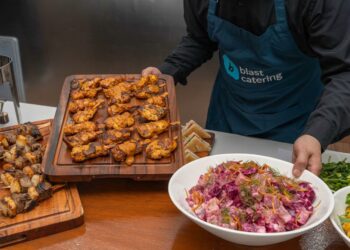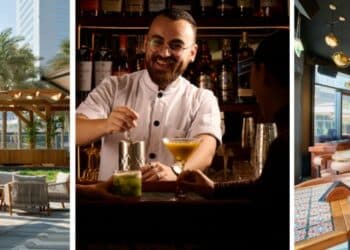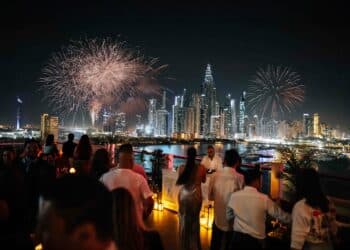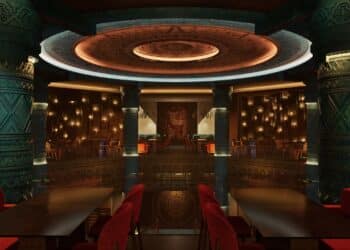The Dubai World Trade Centre’s award-winning hospitality division has completed an AED8 million upgrade of its 3,650m2 kitchen, creating a 33% increase in capacity and an energy efficiency saving of up by 30%, as Michael Gordon discovered
Land locked by exhibition halls within the 1.6m sq. ft. [148,645 m2] Dubai World Trade Centre (DWTC), the Event & Hospitality Services division was constrained within its 3,650m2 kitchen, when the decision was taken to undergo an AED8m upgrade programme. But being unable to move the walls, the key focus was on improving efficiency by making better use of the existing floor space.

Hospitality by DWTC catered to 2,529 international, regional, and local events in 2014, equating to over 2.1 million guests, a 27% increase year-on-year. The kitchen is equipped to handle full in-house production and has been awarded the highest Dubai Municipality rating, Grade A, every year since opening in 2003.
As it looks to drive enhanced growth for its on-site and offsite catering businesses, and to meet anticipated capacity increases until 2020, the refurbishment focussed on installing state-of-the-art equipment, including Smart technologies to integrate and automate processes, helping increase capacity output to 20,000 daily covers – up from 15,000.
It has also led to a significant 30% like-for-like reduction in energy usage as well as enhanced hygiene and safety standards, with the kitchen facilities being both HACCP compliant and ISO22000K certified.
The new ultramodern upgrade includes deck and rotation ovens, flexi chef pans, as well as flexi/combi ovens which allow for recipes to be pre-programmed into the high-tech machines, cutting cooking time down by more than half the average expected time. The automated systems also allow chefs to devote more time to preparation, where cooking can be done closer to the time of the event, ensuring fresher and higher-quality food.
Harald Oberender, director of culinary in Event & Hospitality Services, explains how the design process for the refurbishment began in 2013, with international design firm Michael Chabowski Technical Services (MCTS). “We wanted a design that would last at least ten years, so we looked for proven technology, established and reliable but not too knew that it will default everyday – like the latest mobile phone.
“The technology must be reliable because we are in the business of delivering every day,” he added.
MCTS worked with DWTC to optimise the space, to ensure maximum efficiency, within the existing shell as there was no option to extend the kitchen walls as they were fenced in by the exhibition halls.
Building work was undertaken through the summer from June to August this year, taking a total of 82 days to complete. But with an active kitchen, the process had to be precisely engineered, as Harald explains: “Even in summer we are busy so we had to continue operating while under construction, and as we are so highly regarded with the Dubai Municipality, for our food safety and hygiene, we could not sacrifice that reputation.
“As the kitchen is huge, doing 2.45m covers/year, we were able to shut down one section at a time to ensure food safety, from the bakery to butchery, to fish to meat, etc. When each section was chosen it was broken down into two parts again with a partition erected to allow food preparation to continue in half the space. To overcome this we had to work over 24 hour shifts.
“Even our Ramadan majilis continued to run uninterrupted, even though some of the kitchen had to be moved into the tent. Throughout the renovation we also managed Sports World, Summer Surprises, the summer wedding programme, and all the while we knew that ahead of us was the Air Show and the Formula One – which are each 20,000 covers per day plus. We had to run on over 100% capacity every day.”
With the kitchen design finalised, and approved by Dubai Municipality, the project was put out to tender to five kitchen fitter companies, with Chef First selected as the preferred bidder.
Not only did Chef First deliver the project on time and within budget but they were also very supportive, supplying someone on standby to fix any problems within 24 hours, for the first three months following completion.
“This meant we could fully utilise that equipment with assurances and straight away we went into full capacity so there was no dedicated trial time, it always worked in fifth gear,” says Harald.
To fulfil the kitchen design, DWTC and MCTS had to decide on the kitchen equipment supplier. Harald says: “With purchasing and procurement we analysed several equipment suppliers in terms of water savings, energy savings and advanced technology. MKN had the highest ratio of saving power per operational hour, which reached around 30%.
On the basis of its user comfort, handling, quality, hygiene, capacity, intelligent cooking, and efficiency with electric and water savings, the FlexiCombi was chosen, alongside the FlexiChef, which was chosen for its convenience, rapid response, chemical saving, intuitive operation, consistency and time saving.
“With the integrated USB port, a chef can also upload his own recipes to the FlexiChef, ensuring the right recipe with the auto chef system every time, a quick and gentle pressure cooking, and perfect multi-functionality with the Flexizone System,” says Harald.
He adds: “The FlexiChef has a closed environment and a pressure valve that can reach 1.2bar which means I can clean with no chemicals or scrubbing, plus the higher pressure means you can cook faster too, so chick peas cook in only two hours when it used to take four hours. Also, one large unit can be separated internally to grill, fry and bake all at the same time.
“The advantage of some equipment means it could work without a chef and that may be the future. No longer does a chef have to check the temperature or consistency throughout the cook, the machine does all that for you – and this also adds to our levels of consistency. Ensuring we can offer the same day in day out. In the future I will be able to link all of my combi ovens together and direct them from my office computer – that is the way the technology is going.
“This creates massive savings in time, which means our chefs can do extra duties – the cooking is faster, more reliable and standardised.”
Focused in the hot cooking area of the kitchen the refurb project included a new TSSC blast freezer to complement the existing TSSC blast chiller, and in addition DWTC selected an MKN quick boiling kettle for its water saving efficiency and speed of boiling.
Speaking of the relationship with the equipment supplier, Harald says: “MKN supported throughout with ongoing training, and they provided a development chef in house for several days.”
He adds: “The project came in on budget, and the new equipment has given us an increase in capacity of around 30%. We went from 12-15,000 covers per day, and we have now reached 20,000 covers – as we did for five consecutive days during the Air Show. What is more, the expectation is for the equipment to last us around 10 years, at which time the technology will have moved on again,” concludes Harald.

